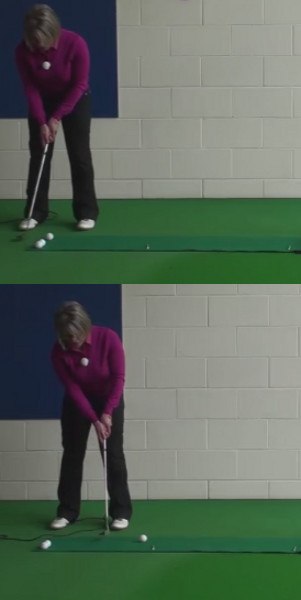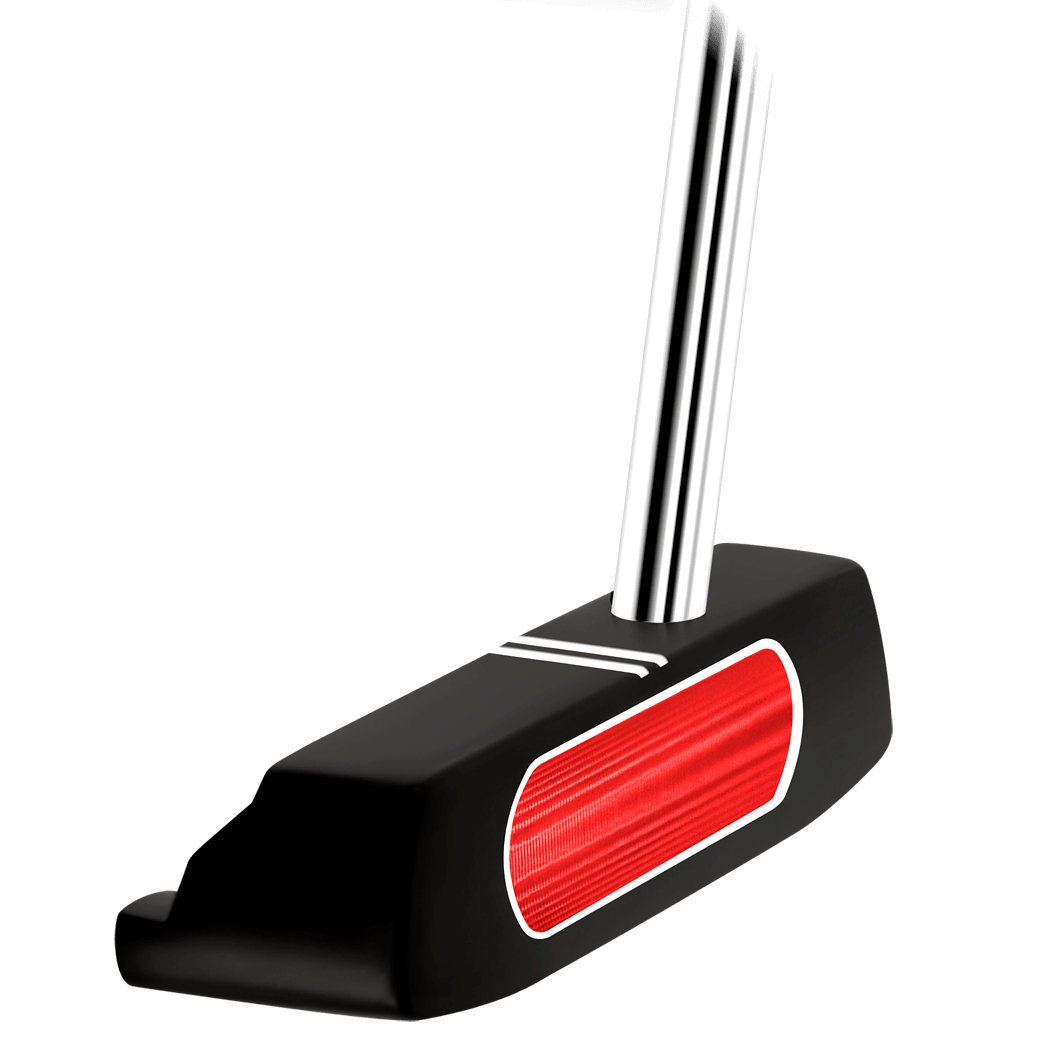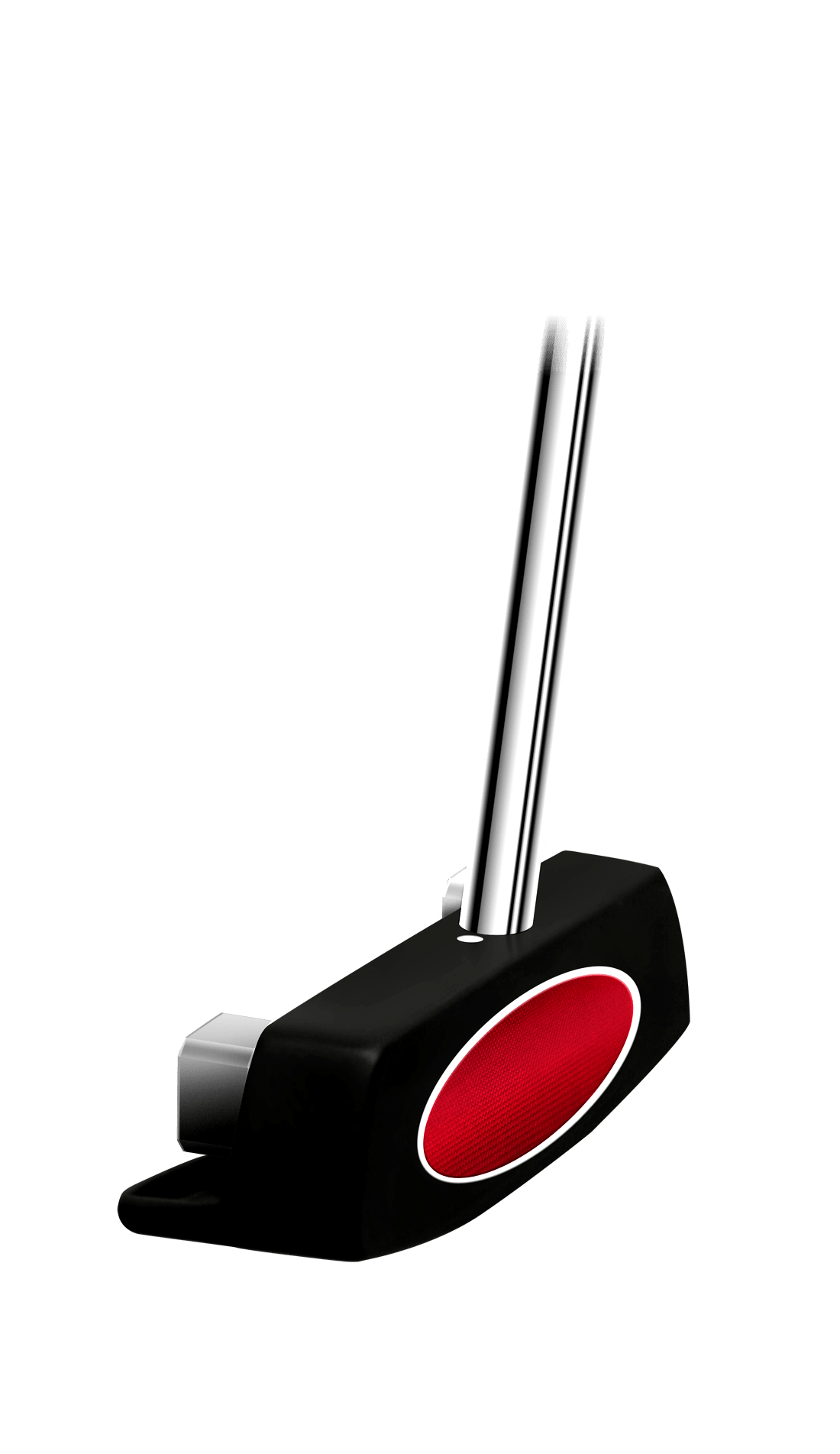
If you do not keep your left wrist firm during your putting action and you flick your wrists as you strike through impact, then you are not making a pendulum action with your putter and this will result in a lack of consistency, distance control and accuracy.
If you consider how a pendulum swings, the top of the pendulum is fixed in position and all of the pendulum swings as one unit below this, at a constant speed and tempo. There is no hinging action half way down the pendulum, the pendulum swings from the upper part of it. Applying this to your putting stroke, the upper part of the pendulum is your shoulders, with the bottom part being the putter head. To move this pendulum, you need to swing from your shoulders (as the fixed or anchored upper point) and ensure that the pendulum of your arms and the putter remain as one unit. If you flick your wrists during your putting action, then you are introducing a hinge half way down the pendulum.
One issue with this is that the putter head will not swing at a constant tempo or rhythm. As you make the flicking action, the putter head will speed up and this will hit the ball at a higher tempo making distance control difficult to achieve. Swinging without this hinging action at your wrists will result in a more constant tempo and with this smoother action you will obtain more consistent distance control by using your swing length to dictate the distance that the ball travels.
The second issue that flicking your wrists causes is that the putter head will be rising as it strikes the ball. When this happens and you are connecting with the upper part of the golf ball, it will again affect the distance that the golf ball is hit. The bottom of the putter face striking the upper part of the golf ball will result in a much shorter putt than the centre of the putter face striking the side of the golf ball.
The flicking action will also cause you directional issues as when you hinge at your wrists the putter face will turn left of the target and the putter head will also travel left of the target line, making it difficult to strike the ball along the intended target line.
The cause of flicking your wrists as you putt is being too dominant with your right hand, if you are a right handed golfer and vice versa if you are a left handed golfer. To cure this problem and to create a more pendulum like swing from your shoulders, you need to reduce the influence that your dominant right hand has over the putter.
When you set up to play a putt, in simple terms you create a “Y” shape with your arms and the putter. If you are making a pendulum action putting stroke you will swing this “Y” shape back and through the ball, keeping it intact and controlling the movement of the “Y” shape from your shoulders.
A great drill to help you achieve this and to keep your wrists much more passive during your stroke is to hold lower down on the handle than usual, so that you have three or four inches of the putter handle above your top hand. Place a golf ball between your left wrist and the handle and swing the putter back and forth without dropping the ball.
If you flick your wrist and become dominant with your right hand, you will increase the gap between your left wrist and the putter handle and as a result you will drop the ball that has been placed there. This will instantly provide you with evidence that you have flicked your wrist. Work on holing putts on the practice putting green without dropping the ball that you have positioned between your left wrist and the putter handle. You will now be swinging in much more of a pendulum action and be controlling the movement from your shoulders.
Putting is a critical aspect of the game of golf, and a bad putting stroke can lead to frustrating rounds and missed opportunities on the greens. Here are some common causes of a bad putting stroke and potential cures to help you improve your putting:
Cause: Poor Alignment
- Cure: Work on proper alignment by using alignment aids, such as a putting mirror or alignment sticks. Practice aligning your body and putter face parallel to the target line.
Cause: Inconsistent Tempo
- Cure: Develop a consistent and smooth tempo in your putting stroke. Practice maintaining the same pace and rhythm on both the backswing and the follow-through.
Cause: Gripping the Putter Too Tightly
- Cure: Relax your grip pressure on the putter. Allow for a light and comfortable grip that promotes a smooth stroke and feel for the putter head.
Cause: Deceleration
- Cure: Avoid decelerating through impact. Focus on accelerating the putter through the ball, maintaining a consistent speed and avoiding a tentative stroke.
Cause: Lack of Putter Face Control
- Cure: Develop better control over the putter face. Practice hitting putts with a square and consistent face angle at impact. Utilize putting drills and training aids that promote a solid and square impact position.
Cause: Poor Weight Distribution
- Cure: Ensure proper weight distribution at setup and throughout the stroke. Maintain a stable lower body and a slight forward press with your hands to encourage a consistent stroke.
Cause: Inconsistent Eye Position
- Cure: Find a comfortable and consistent eye position over the ball. This helps with proper alignment and maintaining a consistent stroke path.
Cause: Lack of Confidence
- Cure: Build confidence through practice and positive reinforcement. Visualize successful putts and focus on a target-oriented mindset. Develop a pre-putt routine that helps you feel comfortable and confident over the ball.
Cause: Mental Distractions
- Cure: Practice mindfulness techniques to improve focus and concentration. Stay present in the moment and block out distractions. Develop a routine that helps you clear your mind and commit fully to each putt.
Cause: Poor Green Reading
- Cure: Improve your green reading skills by studying the slopes and contours of the greens. Pay attention to grain direction, subtle breaks, and the speed of the greens. Practice reading putts from different angles to enhance your judgment.
Cause: Lack of Practice
- Cure: Dedicate regular time to practice your putting stroke. Focus on both technical aspects and distance control. Practice short putts, lag putts, and work on different putting drills to improve your overall putting ability.
Remember, improving your putting stroke takes time and practice. Focus on one aspect at a time and gradually integrate changes into your routine. Seek guidance from a putting instructor or golf professional to receive personalized feedback and guidance. With patience and persistence, you can cure a bad putting stroke and become a more confident and successful putter on the greens.






